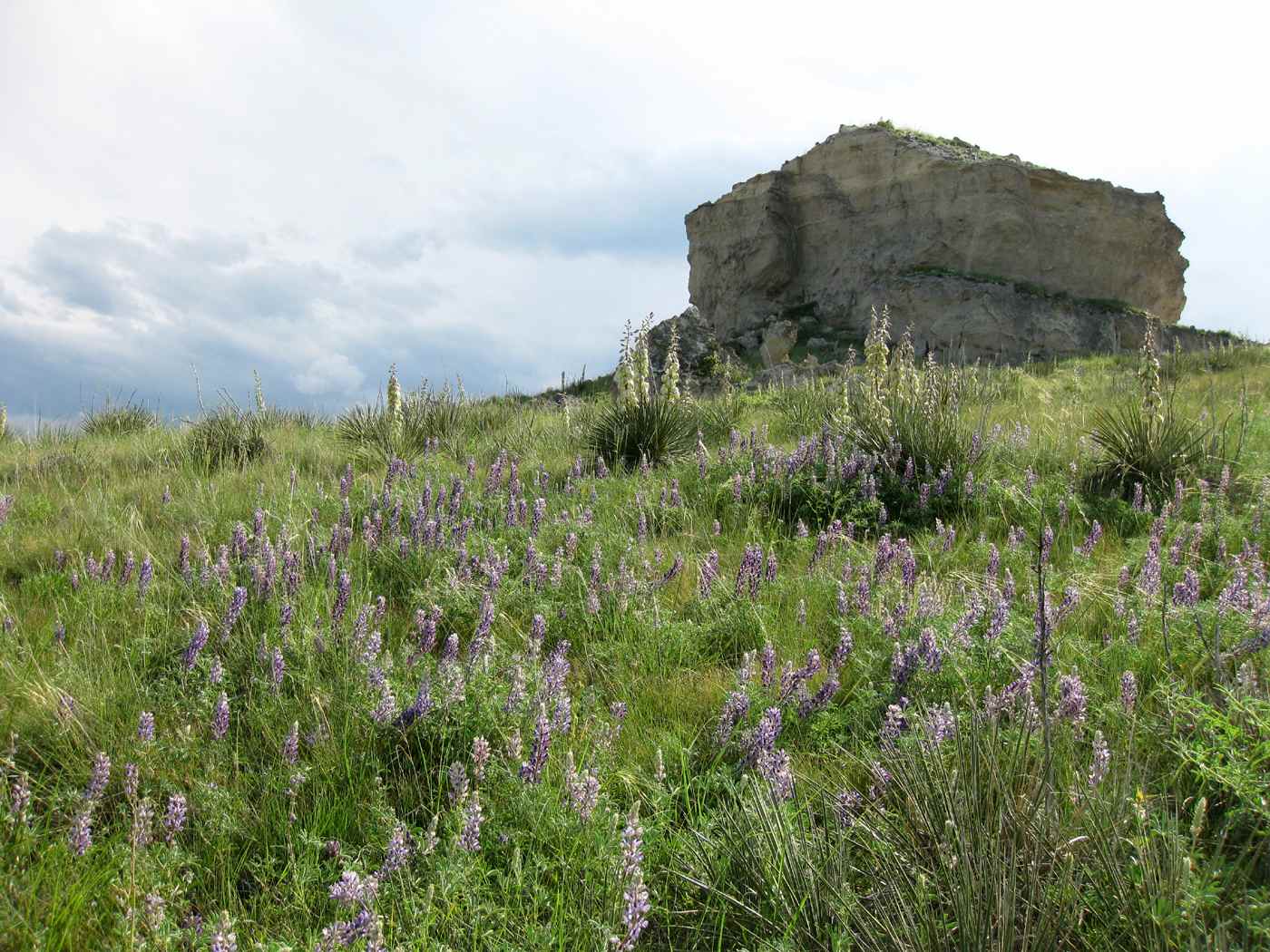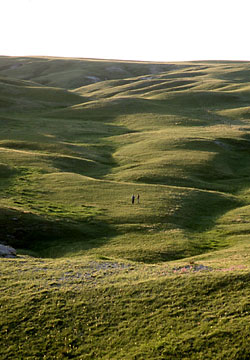Envisioning a program to conserve high plains shortgrass prairie, generate ranch income, and educate the public about the Great Plains
There are
always more questions than answers.
At the
Prairie Plains Resource Institute, a 31-year-old educational land trust in
Nebraska, restoration of high diversity tallgrass prairie ecosystems in eastern
Nebraska is their core activity and source of revenue. They also are involved with l

and
education and with management of six small prairie preserves. Ranch management
in western Nebraska, on the other hand, is a work in progress.
Bill Whitney,
Executive Director of the Institute says, “We lease our 4,944-acre Guadalcanal
Ranch near Harrison in the northwest corner of the state to Scott Schaefer, a
homegrown young man who loves agriculture. He wants to do the right thing for
the resource and make a
living for his family.
“The Prairie
Plains goal is to layer an educational process onto the working ranch, covering the gamut of natural history,
history and agriculture.
The idea
is to explore new income streams for the ranch while educating people who know
little about the Great Plains.
There’s
a lot of compatibility.
But we need
to determine how
agritourism
, ecotourism, research and field study fit with the
working aspects of the ranch.
Also, who is our potential audience, and exactly what do we
have to offer?”
That’s how Mr.
Whitney found me:
while
researching ranch stewardship he discovered PLN.
One of
the Central Problems in Ranching
“Scott and I
are learning from each other,” Whitney continues. “He’s taught me one of the central problems in
ranching. When cattlemen add value
to their livestock through good native prairie nutrition and genetics, and make
real conservation progress and productivity improvements to their ranch, they
don’t necessarily get a reward at the sale barn for their calves!
“Ranchers are
victims of the McDonald’s and Wendy’s mass market that rewards pounds
regardless of quality and flavor.
Our young lessee is frustrated by this, yet it is hard to direct-market
or make a regional marketing label based on land stewardship, much less the
harder route to grass-fed ranching and associated specialty markets.
“We want to
make our ranch tenant stronger in his business while improving ranch
infrastructure, biodiversity and sustainability. But,” Whitney adds, “it’s a work in progress.”
The
Two Nebraskas: East and Panhandle
Nebraska, the
Cornhusker state, is far more than endless cornfields. Nebraska has a moisture and altitudinal
gradient, which runs from above 34 inches annual precipitation/1000 feet
elevation in the southeast to around 15 inches of precipitation/4800 feet in the
northwest.
Eastern
Nebraska's longer growing season and soils are good for raising soybeans and
corn where tallgrass prairie once grew.
Whitney says most of his staff's time is spent in east-central Nebraska,
where they do high diversity tallgrass prairie restoration. “We also have six prairie properties, which
we burn and graze. When we started
prescribed burning 30 years ago, it was a scary word to some, but a lot of
private landowners want to burn now.”
About 80 to
90 percent of western Nebraska is still native shortgrass prairie. Because of the rugged terrain, it is
harder to irrigate and thus not a lot of the land is cultivated. Much of it still harbors a significant
diversity of plants and animals precisely because of the traditional grazing practices,
which maintain native grassland vegetation.
“What we’re
after on
Guadalcanal Ranch is that the working ranch be viable,” continues Whitney. “It’s on the headwaters of the Niobrara
River, one of the Plains’ most interesting, running across Nebraska’s northern
tier. The ranch overlies hundreds of feet of saturated fresh water
aquifer. It harbors rare headwater
fish, grassland bird species, a rare orchid and a world-class fossil bed. We want our lessee to have a good
business while maintaining the biodiversity and protecting the rarer
things.”
Room
for Improvement in the Wide Open Spaces
As a
stewardship organization, Prairie Plains faces several communication challenges. Whitney says “There has to be a
cultural basis for stewardship. In
our throw-away urbanized culture, it’s extremely hard. The average city dweller and even many
rural townspeople don’t seem to know much about the landscapes that provide
food, water or natural amenities, much less the people who work on the land.”
When it comes

to landowner outreach, “our message is that there's always more to learn about
your own land's resources,” Whitney says.
“For example, in eastern Nebraska not all people who graze livestock see
themselves fundamentally as plant producers. Consequently, they don’t know plants very well. Knowledge is
a powerful thing, and learning more details - such as plants and basic ecology
- could help them restore their native pasture to a more diverse and productive
state. The point is that culturally,
Prairie Plains Resource Institute isn’t going to get
anywhere in conservation without affecting people’s perception of where they
live. That’s our approach. It's slow, and it’s usually one on one.
“I’m from
Nebraska, and I’ve never lived in another place. The landscape, social context and sheer scale of things out
here on the Great Plains is awesome.
I think the access to space is incomparable - you see a long way. Exposing others to that is amazing (and something that will get a boost with the
Michael Forsberg's Great Plains documentary this year)."
With the
help of organizations like the Prairie Plains Resource Institute, understanding and appreciation of our wide-open heritage is growing.
 Sign In
Sign In
 Sign In
Sign In
